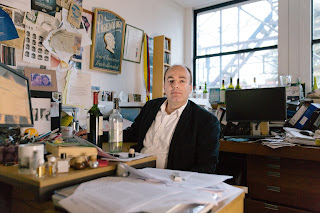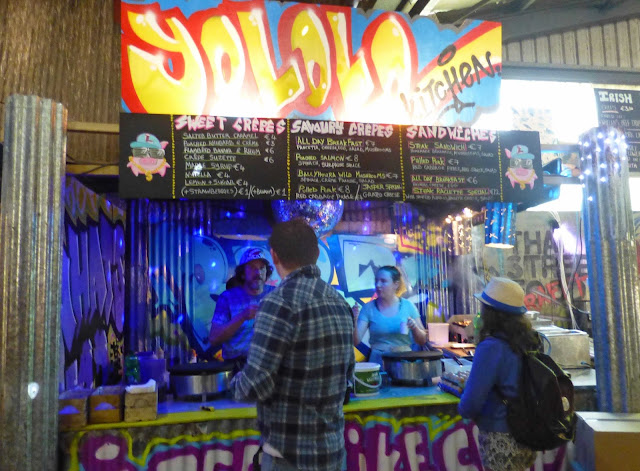Launching today! Tasteology – a new documentary series uncovering the essential steps to the ultimate taste experience
Tasteology is the name of a new AEG-initiated documentary series uncovering the four steps required to achieve cooking results that are multisensory, sustainable, nutritional and delicious all at once. The four-episode series invites viewers on a culinary journey around the world to gain inspiration and knowledge far beyond TV cooking shows. Insights are gathered from different kinds of experts, such as a psychologist, a chemist, a food waste activist and a famous Instagrammer, who all share their answers to questions traditionally posed to chefs. Tasteology launches on May 25 and is available to watch on YouTube and at www.aeg.co.uk/tasteology

Tasteology seeks out the answers to the ultimate taste experience from new angles and expert perspectives. The ambition of the film series is to look far beyond traditional cooking programmes and to guide the viewer towards new paths in search of the ultimate taste experience.
Recipes and cooking methods may get the most attention when it comes to preparing food, but that’s only part of the picture. AEG’s mission is to look beyond this step to explore different aspects and levels of taste, as well as how to achieve its full potential. The result is a portrait of the four essential steps to better food: source, chill, heat and experience. Each episode of this documentary series is dedicated to one of these aspects, digging into culinary traditions and unconventional innovations in order to uncover the processes to achieve the perfect taste. It’s about finding new ways to cook and eat food that is both tasteful, multisensory and sustainable. Hands-on cooking tips are mixed with cultural, societal and scientific reflections.
Why rather than how
While many educational resources focus on how to cook a meal, often step by step, instructed by chefs, Tasteology takes this one step further through seeking out expert knowledge on why certain methods, circumstances and tools create exceptional taste experiences. By gathering insights from new and different kinds of experts, Tasteology brings new perspectives to an area that has long belonged to traditional chefs.
An eight-month journey and handpicked experts from three continents
The film crew travelled to a large variety of destinations over an eight month period collecting insights from the world’s premier taste experts. Mentioning just a few, the team met with ‘the father of molecular gastronomy’ Hervé This who invented ‘the perfect egg’, food waste activist Tristram Stuart who wants to change society’s attitude towards wasting food, and the famous Canadian Instagrammer Chef Jaques la Merde, who makes beautiful, plated creations out of food from the nearest gas station. These experts have a wide range of backgrounds and hold knowledge within different fields, but are united around their insatiable curiosity for taste.
The four themes: source, chill, heat and experience
Each of the four themes cover essential steps in the process of creating an exceptional taste experience. Here is a sneak peek at the story of each 15-minute episode:
Each of the four themes cover essential steps in the process of creating an exceptional taste experience. Here is a sneak peek at the story of each 15-minute episode:
‘Source’: Watch the episode here
How does one source the best ingredients in order to take taste further? And how is taste affected by the lost nutrients of today’s mass produced food? Is it true that food cravings are our natural way of making sure that we get the nutrients our body needs? Explore these questions and learn about foraging, a trend that goes back to basics, respecting the ingredients’ true, original taste. Meet with foraging trendsetters and chefs Satchiko and Hisato Nakahigashi, who own a Michelin starred restaurant in Kyoto and explain the meaning of ”Tsumikasa” – a Japanese word for respecting food. In this episode we also meet with Mark Schatzker, the American author of The Dorito Effect, a book exploring what artificial flavours have done to our eating habits.
‘Chill’: Watch the episode here
Perfect taste starts with respect for the ingredient and the knowledge of how to handle it correctly. While the world continues to amass huge amounts of food waste, few people have discovered the key to reducing it – storage. And what’s the point in investing in good ingredients if you don’t know how to store them properly to achieve maximum taste? Meet with the British food waste activist and author, Tristram Stuart, who has devoted his life to decreasing the amount of foods being wasted. We also meet with the German chef and Wagyu cow breeder Ludwig Maurer for insights and expertise on how to store ingredients in the optimal conditions to enhance taste and reduce waste. Finally, we meet Culinary Misfits - a Berlin-based duo doing what they can to campaign against the increasing waste of fruit and vegetables that are thrown away just because they do not fit within the measures of cosmetic standards.
‘Heat’: Watch the episode here
Get to know how cooking a dish in the best conditions can take taste further. Using humidity in cooking is a thousand-year-old trick that spreads heat evenly and makes food more succulent and flavourful. Learn about the importance of precise heating in various cooking methods, the benefits of using steam or sous vide, and what it takes to create the ‘perfect egg’. Meet the French gastro-chemist Hervé This, the man who taught the world how to boil an egg in a dishwasher. Finally, we meet Catalina Vélez, one of the world’s most influential Latin-American chefs. After digging deep into traditional Columbian food culture, she discovered that steam was the main ingredient of great taste.
‘Experience’: Watch the episode here
Good food is more than just a good recipe. It’s about the whole experience. How much of the eating experience actually comes from taste? How do colours, sounds, the weight of cutlery and the shape of the plate affect our overall taste experience? Meet Professor of Psychology, Charles Spence, who shares his research on how the brain helps us to understand what the food is likely to taste like before actually tasting it. He also shares knowledge on how to play with surrounding influences such as sounds and colours to affect our taste experience. Charles Spence works closely with Jozef Youssef, author, chef patron and founder of the gastronomic project Kitchen Theory. Together, their united mission is to understand the full taste experience.
 |
| Tasteology Experience: Charles Spence |
‘I think a lot of people ask if science gets in the way of creativity and then you have those who say ‘doesn’t the creativity get in the way of science?’ For me it’s all about understanding how to compose the colours, sounds, smells and atmosphere into a complete harmonious taste experience. In order to do that I need to strike the perfect balance between science and art,’ says Jozef Youssef, author, chef patron and founder of the gastronomic project Kitchen Theory.
In this episode, we also meet Chef Jacques la Merde (also known as Christine Flynn), a famous chef and popular Instagrammer with over 125k followers who makes beautiful plate creations that looks like fine dining, but in reality the food comes from the nearest gas station.
The documentary is initiated by the home appliance manufacturer AEG with the mission to explore different aspects and levels of taste and inspire the viewers on how to take it to the next level. The film series is produced by the award-winning production company House of Radon.
Press release

























